
Sanctum Guide
1. Validator staking
Staking is at the core of every blockchain based on the Proof Of Stake mechanism. Solana is no exception. Staking is a principle where users of the blockchain lend their tokens to validator servers. Validators are computers verifying that every block (group of transactions) pushed to Solana is valid and can be safely added to the blockchain ledger.
The more a validator owns tokens, the more it is considered as legit by the algorithm to validate blocks. Every block validated by the validator is rewarded. So, the more the validator validates transactions, the more fees it collects. This system creates a strong incentive for validators to attract a lot of lenders.
To stake on a validator, you can use directly your wallet where a list of validators is available. They all have different settings: fees collected and total value locked. Validators with bigger amounts of SOLs tend to be safer but grab more fees most of the time. It's up to you to find the right balance between safety and rewards by using different validators.
Staking comes with rewards. All stakers get a share of the fees collected by the validators. Every staked receives around 8% of the staked amount on Average Per Year (APY). Rewards can be retrieved aside from unstaking.
Note: It leads to a secure blockchain because a validator compromising the chain would lose all its tokens. The cost of an attack is too high to make it interesting.
2. Liquid staking
Validation rewards are given to validators every epoch (a defined amount of transactions validated). When the rewards are given, the token can be released and new tokens can be locked. The consequence is that staking tokens requires you to lock your Solanas for 2 to 3 days (432000 slots). From a user perspective, it makes the staking experience unpleasant.
That's where Liquid staking comes into play. Some protocols propose to aggregate SOLs from many wallets and stake them for users in exchange for a token labeled by the protocol, a receipts token. Because the protocol collects many native tokens, they can easily manage the in and out of the stakers. Moreover, they can use the most efficient strategy to stake the tokens (each validator has their own characteristics, strategies are possible to get a good balance). That way, they can take a fee on staked tokens while providing a good APY to the user.
It improves a lot the user experience but it adds a layer that can be compromised. And, it doesn't allow the user to select its validator. Validators are often tied to non-LST projects.
It's common for Solana projects like JUP, Helium, Bonk to get their own validator. Because people want to be able to support the project while keeping their sols, they like by staking their Sols on the project validator. With current Liquid Staking Providers, it's not possible to get the benefits of liquid staking and select a favorite validator.
3. Liquid staking for any project
This is where comes the Sanctum innovation. The Sanctum protocol allows any project to provide its own liquid staking. That way, you can stake your sols into your favorite project validator while keeping the benefits of liquid staking. It's even better because you deal directly with the desired validator, thus, you limit the compromising risk of the LST token.
As an example, you can buy jupSols to stake on the Jupiter validator or buy bonkSols to stake on the Bonk validator. You can support the Bonk team without being exposed to the BONK volatility.
If you want to support Sanctum directly, you can use their own receipt token: the Infinity token ($INF). INF acts as a classic LST token where they give you a receipt for managing your staked sols for you. It comes with additional rewards from the fees used to trade Sanctum LSTs.
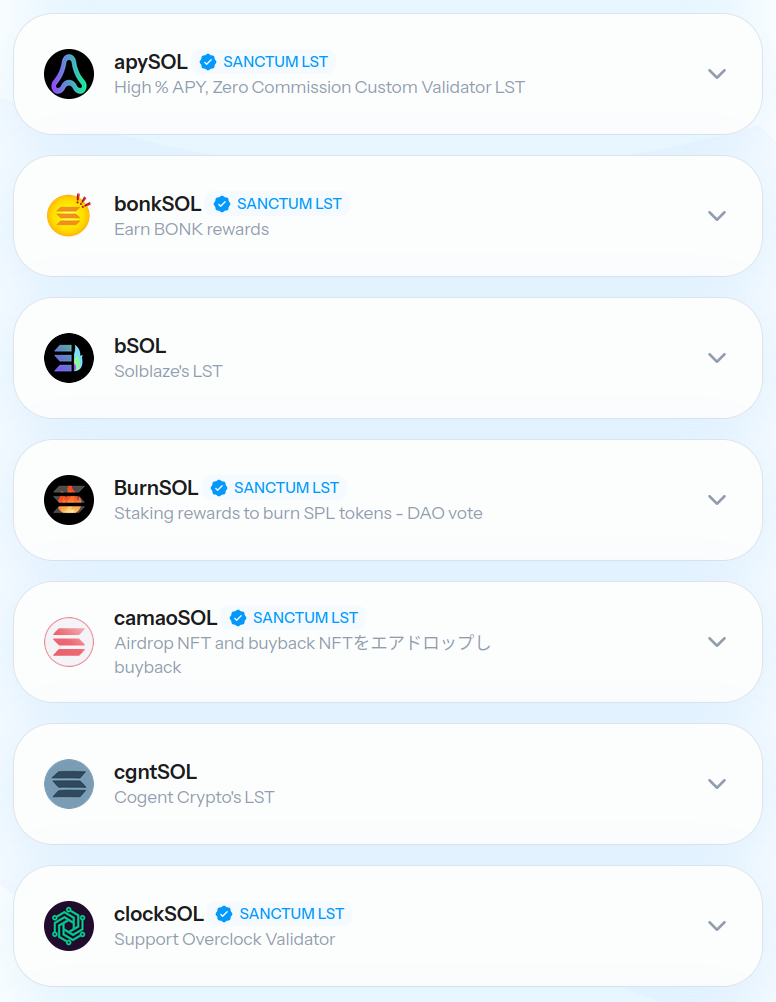
4. Staking gamified (Wonderland)
To push things further, the Sanctum team decided to make staking fun. 18 of the available LSTs tokens bring you point rewards in different buckets. Every bucket is represented by a cute character gaining XP when you hold your linked LST.
They also created community quests. On a regular basis, the community meets around a complex riddle and solves it collaboratively. Once solved, extra point rewards are collected for a given set of LSTs.
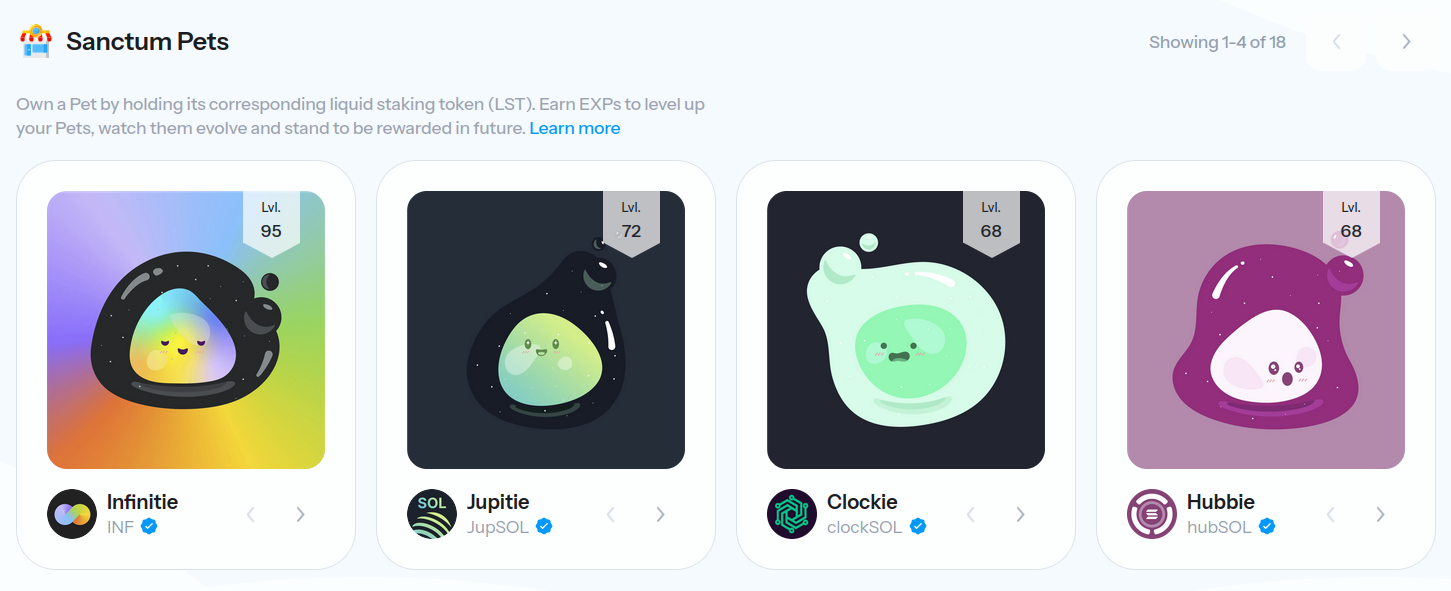
5. New value proposition for projects
We saw that Sanctum is already innovative and brings fresh air to the Solana space through its gamification and branding. But these new features come with an extra benefit for projects and SOL holders.
Projects like NFT marketplaces or lending protocols could allow to use of their own LSTs instead of SOLs. Imagine that Tensor allows to trade NFTs with tensorSOLs. It would allow you to bid and trade while still taking full advantage of the staking rewards and contributing to the Solana blockchain and the Tensor project. The same mechanism works for Kamino, Magic Eden, SharkyFi or any project requiring to use of your SOLs.

This value could extend to individuals. If you like a creator, you could buy their own LST token. All your staking rewards will go to this person. Let's say Vitalik creates its own VitalikSOL token, it would allow you to reward him by swapping your SOLs to his token. The first LST available following this scheme is the fpSOL which is tied to the Sanctum founderc.
6. How to get your LSTs
Getting LSTs is pretty simple. You simply have to connect on the Sanctum application and trade your SOLs to the LST token you want. The swapping system is the same as any decentralized exchange.
Once done, the LSTs will appear in your wallet like any token. The SOL value of your LST will grow over time allowing you to claim your rewards.
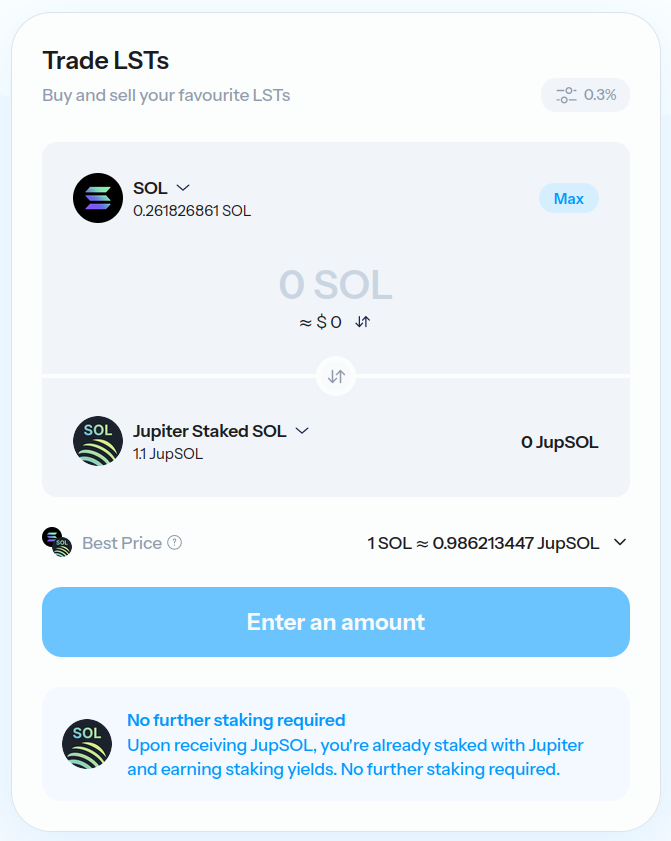
7. Airdrop
To motivate people to use Sanctum over other protocols, they organize an airdrop (season 2 running actually) rewarding staking of SOLs. The XP earned by your pets allows to participate and accumulate points. The quests are done in this context too. It makes things fun while providing extra rewards through their $CLOUD token.
8. The $CLOUD token
Like any project, Sanctum will have its own governance token, named $CLOUD. This token will come with two particular utilities:
- Voting power to accept or not new projects
- Access right for Sanctum partners
So, if you believe in Sanctum and want to invest in their token it's good news. Alongside the voting power you will get, it will create buying pressure from the partners. So, the better the platform performs at expanding its ecosystem, the scarcier the $CLOUD token will be.
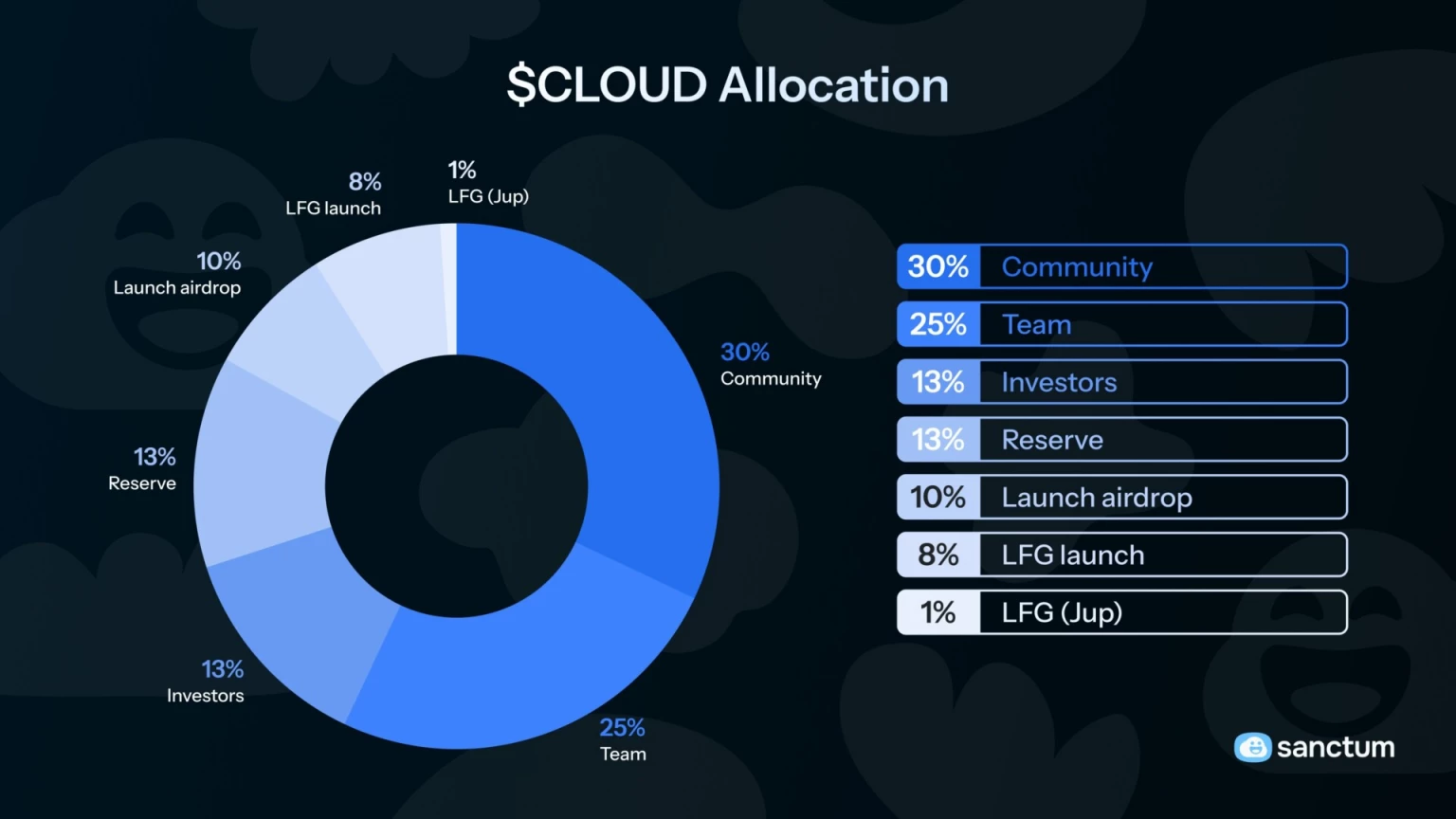
9. Available validators and LSTs of interests
To end this guide, I'm going to introduce you to the most interesting LSTs available on Sanctum. Among the 50 LSTs available some caught my interest:
- JupSOL: This is the receipt for the Jupiter Exchange validator. It offers one of the best APY (11%). It may be rewarded by the next JUP airdrop season.
- BonkSOL: It is tied to BONK the leading meme token on Solana. Bonk has yearly rewards. Holding some Bonk LSTs may be seen as a nice thing for the BONK community.
- WifSOL: Wif is the other leading meme of Solana. This LST is different because it rewards you with WIF instead of SOLs.
- PathSOL: The Pathfinders is the most innovative project. They will create an NFT collection that will be only mintable with PathSOLs. NFT minted that way will always be tied to their LST. That way you will be able to un-mint the NFT if you are not satisfied anymore by their project.
- vSOL: vSOL privilegiates new validators. It's a great token to help Solana get more decentralized. An upcoming airdrop is announced, owning it allow to contribute to it.
- HausSOL: It is the DRip project validator. Holding HausSols increases your chance of getting rare and legendary drip drops. You earn more droplets too. Allowing you to reward more artists from their platform.
- FpSol: It is the validator of the Sanctum founder. All rewards get to him. It gives you access to a private channel in the Sanctum Discord.
10. Profiles
Last but not least, Sanctum allows you to create profiles. This profile will allow you to manage your Sanctum pet collections but not only. It will come with some social benefits like:
- Proposing your own LST.
- Publishing content tied to your profile
- Gating access to your content via your LST.
Allowing any creator to provide its LST is a big move forward for the Solana community. People will be able to contribute to the ecosystem while supporting their favorite artists and writers. It's a great way to nurture creativity and builders.
Conclusion
Sanctum's mission is to make all the staked tokens liquid. They want to create more incentives to use on-chain protocols and to have more SOLs staked. It's their way to push the decentralization and finance freedom further. To achieve that they made Liquid staking an easy choice for Solana users.
Liquid Staking through Sanctum allows you to benefit from a strong yearly reward rate while keeping your SOL investment liquid and supporting the project you like. Soon, it will also allow you to take advantage of the Solana dApps while keeping your SOLs staked. Even better, with their upcoming social features, they will allow you to reward any creators. That way, the whole Solana ecosystem will benefit from the Sanctum technology.
To foster adoption, the Sanctum ecosystem provides a gamified and fun experience. It's easy to start with their LSTs and it comes with additional rewards. Nevertheless, it comes with drawback: it puts an additional layer that can be compromised. So, if you are ready to handle those risks, I encourage you to explore staking through the Sanctum products. It will benefit to the ecosystem while giving you a smooth experience of the validator staking and allowing you to grow your SOL holdings with a good risk/reward ratio.
Resources
All contents are licensed under Creative Commons by-sa.
